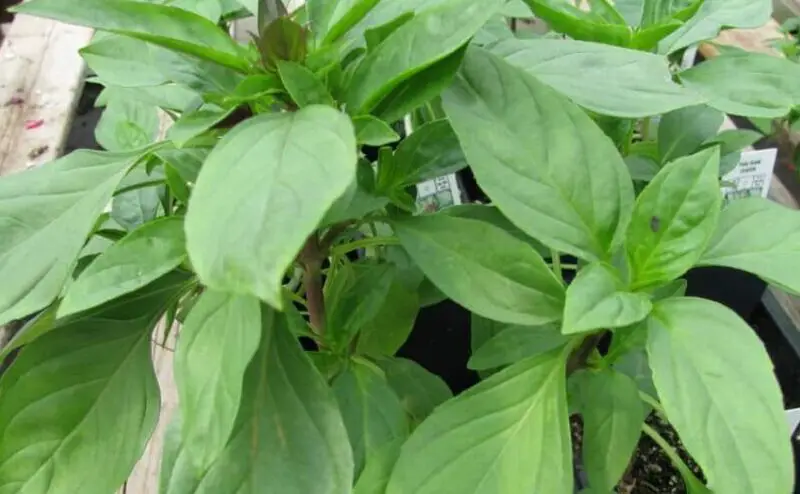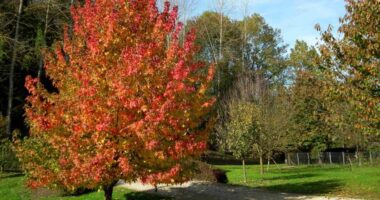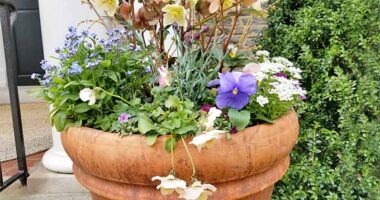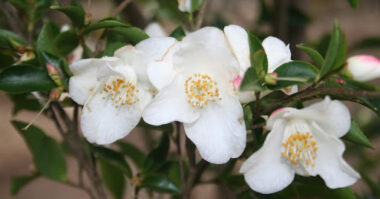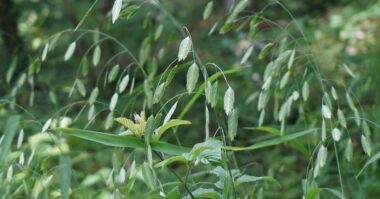This variety of basil evokes rather the taste of tarragon – slightly aniseed – and is particularly adapted to the Asian kitchen. Here we push open doors, but we specify, just in case.
The culture of the basil is relatively easy, but it is a great sensitive: it needs a sunny place, but not burning, a soil always wet, and enriched regularly. It does not like cold or hot weather, nor draughts. If the conditions are met at your place, it’s all done! Oh, and for the recipes, you don’t need us!
Contents
Sowing Thai basil
Outside
Sowing basil is a good way to get a strong plant.
You can buy your seeds commercially or collect them every year – if you didn’t buy a low-fertility cultivar to begin with – after your basil has bloomed, in order to sow them the following year.
You can sow directly in place, starting in April in southern regions and as early as May in other regions: the seeds will rise if the average temperature is around 64°F.
Sow in light, well-drained soil in clumps of a few seeds spaced 8-12 inches apart, barely covering with soil or potting mix because the seeds are very small.
Water in a light rain.
Make sure the soil stays moist for the first few weeks after sowing.
Indoors
Sow the basil in a bowl or in pots, under a cold frame, from February to April, without covering the seeds which need light to germinate.
Place the seeds on the surface and sprinkle a little potting soil on top.
Place the seedlings in a bright room with a temperature of about 64°F. Behind the kitchen window works well: just avoid full sun and big temperature swings.
Keep the soil moist for the first few weeks, but never soggy, by spraying gently and regularly.
How to plant Thai basil
Prefer a sunny location, sheltered from the wind.
The soil must be well drained to avoid stagnant water: the ideal is a substrate made of potting soil, with an addition of 10% of sand.
In fact, basil likes to have its head in the warmth and its roots in the coolness. But absolutely avoid soggy soil!
Whether you sowed under cover or bought a shaped plant, you can put it in the ground from May and throughout the summer.
Basil is also perfectly suited for indoor cultivation, behind a window, or on a balcony, in a pot or in a window box: if you wish to keep it in a pot, replant it immediately after purchase in a larger pot – a simple terracotta pot with a dish will do!
A little bonus: commercial pots often have several stems. Use up one or two of them and replant the rest in different pots! Alone in each pot, they will hold better!
Maintaining Thai basil
Prune my Thai basil
If you do not want to produce seeds, prune regularly the ends of the branches, and remove the ears of flowers which make their appearance, before they tire your basil!
Remove, between two fingers, any flower buds as soon as they appear, to stimulate vegetative growth. Towards the end of the season, you can leave a plant or two to mature to collect seeds for the next season.
Watering my Thai basil
Basil appreciates regular watering, but be careful not to get the foliage wet to avoid disease!
A golden rule: never water in full sun: it can burn the foliage and it wastes water. Water in the morning or evening, but not too late.
If possible, spray the seedlings instead of watering them – very very gently – to keep the substrate moist! Once they have grown a bit, say at least after thinning, you can switch to direct watering, but still gently!
Choose pots with a water reserve if you are growing on a terrace or a balcony, otherwise put saucers under the pots.
Beware, some potting soils retain too much water – if you notice that after several days the soil is still soaked, water less. Otherwise, you risk melting the seedlings.
Pinching Thai basil
Pinch the new shoots, when the plant has reached 4 inches, in order to encourage new ramifications: cut the end of the stem between your thumb and your index finger: the lateral stems will thus develop.
You can repeat the operation several times on all the ends of stems.
Thai Basil Recipes
It’s all very well having a Thai basil in your kitchen, but you might as well know how to use this unique aromatic herb. In fact, we can’t recommend enough that you let your creativity run wild!
Thai basil leaves are best eaten fresh, but you can also freeze them to make a large stock. Try to revisit all the great classics of Thai or Vietnamese cuisine! Improvise a delicious Bo Bun with rice noodles, bean sprouts and pieces of beef with Thai basil.
Vegetarian friends, feel free to adapt this recipe using textured soy protein to replace the beef. You can also use this basil in fish dishes, like sea bream with coconut milk broth. Or with scampi in white wine. Finally, for those with a sweet tooth, a delicious sorbet made with Thai basil will delight young and old alike!
